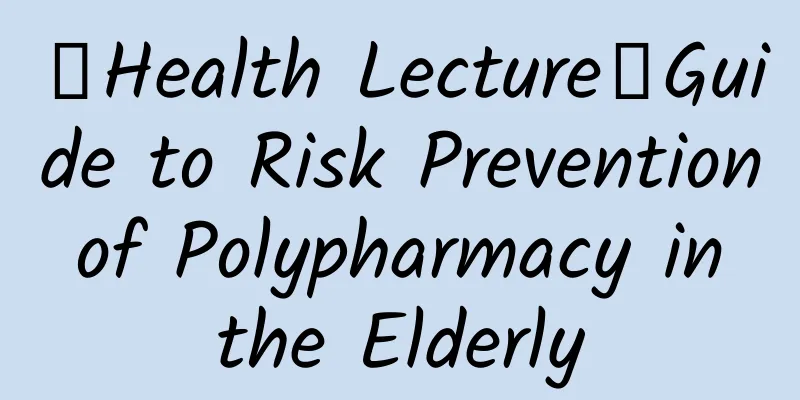Learn about home management of chronic obstructive pulmonary disease

|
Author: Tong Mingxiao Beijing Jishuitan Hospital Affiliated to Capital Medical University Buzorem Abula Peking University Health Science Center Ma Haiou Beijing Jishuitan Hospital Affiliated to Capital Medical University Illustration: Zhang Kaijie Beijing Jishuitan Hospital Affiliated to Capital Medical University Reviewer: Liu Meijuan, deputy chief nurse, Beijing Jishuitan Hospital, Capital Medical University Chronic obstructive pulmonary disease (COPD) is a common, preventable and treatable chronic inflammatory disease of the airways. This disease is caused by airway abnormalities (bronchitis, bronchiolitis) and/or alveolar abnormalities (emphysema), and is characterized by persistent and progressive airflow limitation, leading to symptoms such as dyspnea, coughing and wheezing. According to the World Health Organization, COPD is the third leading cause of death in the world. In severe cases, it can cause respiratory infections and lead to respiratory failure. Since COPD is clearly defined as a disease with irreversible airflow, the main focus of prevention and treatment of COPD is on the upstream stage of the disease, when airflow limitation is still in the reversible stage. Through scientific and effective prevention measures such as smoking control and standardized home management measures, efforts are made to prevent the disease from developing into an irreversible state of airflow limitation. 1. Smoking control Smoking and exposure to secondhand smoke are clear risk factors for COPD, greatly increasing its morbidity and mortality. 80% to 90% of COPD patients are smokers. The chemical components in tobacco smoke can repeatedly damage the airways, cause inflammatory reactions, and damage lung tissue, leading to airway stenosis and decreased lung function, thereby inducing COPD. Smokers need to be determined to quit smoking. It is recommended to assist in quitting smoking through the following methods, such as avoiding or staying away from smoking environments; when the idea of smoking arises, you can choose to chew gum, eat properly, exercise, etc. to divert attention and gradually reduce the amount of smoking; seek help from a professional doctor when necessary. At the same time, attention should be paid to preventing passive smoking, and it is recommended to wear a mask in public places. 2. Reduce occupational exposure Occupational exposure to chemical fumes or harmful gases can increase the risk of chronic airway obstruction and respiratory symptoms. Chemical substances, dust, and germs enter the lung tissue through the respiratory tract, damaging the airway and lung tissue, and causing COPD. People at risk of occupational exposure should pay attention to the hazards of occupational exposure, have regular physical examinations, and take personal protection when performing related operations. 3. Avoid indoor air pollution Common cooking pollution fuels in biofuels can cause indoor air pollution. Harmful components enter the lungs and stimulate cells to cause airway inflammation and lung damage. Range hoods can only remove a small part of the fumes, and most of them still float in the air indoors, causing air pollution. It is recommended that families use cooking methods such as steaming and boiling to reduce kitchen fumes; they can also wear masks to reduce fumes inhalation. Improve the ventilation environment at home by opening windows for ventilation, and regularly test indoor air quality. 4. Reduce asthma attacks The risk of developing COPD in adult asthma patients is 12 times that of normal people, and about 20% of asthma patients may experience irreversible airflow limitation. Patients with a previous diagnosis of asthma should pay attention to the following: ① Take medication and standard oxygen therapy as prescribed by the doctor; ② Identify allergens and avoid contact; ③ Avoid smoking; ④ Exercise appropriately to enhance resistance; ⑤ Keep the room clean and tidy and reduce contact with animal fur; ⑥ Prevent colds; ⑦ Eat a light diet. Through the above measures, the lung and airway damage caused by repeated asthma attacks can be reduced, and the risk of developing COPD can be reduced. 5. Oxygen inhalation therapy Oxygen inhalation therapy (abbreviated as "oxygen therapy") is a widely used home treatment method. The key is to use it in accordance with the doctor's instructions: ① Use appropriate oxygen inhalation methods, correctly adjust the oxygen flow rate, and ensure the oxygen inhalation time. Long-term low-flow nasal cannula oxygen inhalation (1-2 L/min) is generally used at home, and the oxygen inhalation time is 10-15 hours. Do not increase the oxygen flow rate without authorization. High-flow oxygen inhalation cannot quickly correct hypoxia. On the contrary, it may cause the respiratory center to lose hypoxic stimulation and weaken breathing, so that carbon dioxide cannot be exhaled, causing carbon dioxide anesthesia. The flow rate adjustment should be based on the middle position of the flow meter float. ② Before oxygen inhalation, ensure that the device is tightly connected and the nasal cannula is unobstructed, and clean up nasal secretions when necessary. ③ During oxygen therapy, patients/caregivers need to record the oxygen inhalation method, time and flow every day, and closely observe whether the patient has symptoms of hypercapnia or suspected oxygen poisoning such as decreased pulse oxygen saturation, changes in consciousness, faster and then slower breathing, faster or slower heart rate, etc. If there is a burning sensation behind the sternum, pain, nausea, vomiting, irritability, etc., you should seek medical attention in time. ④ Pay attention to oxygen safety and prevent fire, oil, heat and shock. 6. Commonly used drug treatments (1) Salbutamol sulfate inhalation aerosol: Inhalation administration can quickly dilate the bronchi; at the same time, it has a good inhibitory effect on the release of inflammatory cells, relieving airway stenosis and tracheospasm. The method of use is shown in Figure 1. Figure 1 How to use salbutamol sulfate inhalation aerosol Copyright images are not authorized for reproduction Note: ① If you need to use this medicine repeatedly, there should be at least 1 minute between each use. ② Salbutamol sulfate inhalation aerosol is an emergency medicine. If it is used in combination with budesonide formoterol powder inhalation or tiotropium bromide spray, use salbutamol sulfate inhalation aerosol first. Budesonide-formoterol powder for inhalation: It has anti-inflammatory, bronchial smooth muscle relaxation, and airway resistance reduction effects, and can significantly improve the symptoms of COPD. See Figure 2 for usage. Figure 2: How to use budesonide-formoterol powder for inhalation Copyright images are not authorized for reproduction Note: ① Do not blow air into the mouth of the medicine bottle to avoid moisture inside; ② Do not scrub with water or other liquids, wipe the mouthpiece with a dry paper towel once a week; ③ When the display window turns red, it means there are 20 suctions left, prompting you to go to the hospital as soon as possible to get another one as a spare. When the display window is all red, it indicates that the medicine is used up; ④ Rinse your mouth deeply with water (to the throat) after each medication. Salmeterol and Fluticasone Inhalation Powder: It has the effect of reducing inflammatory response factors, can quickly dilate the bronchi, improve the patient's airflow limitation, and produce the effects of relieving asthma and spasm. The method of use is shown in Figure 3. Figure 3 How to use salmeterol fluticasone inhalation powder Copyright images are not authorized for reproduction Note: ① When inhaling, bite the upper and lower teeth, keep the tongue flat or even concave; ② Do not move the slide bar at will to avoid wasting the medicine; ③ Rinse your mouth deeply (to the throat) with clean water after each use of the medicine. Tiotropium bromide spray: suitable for the maintenance treatment of COPD. See Figure 4 for usage. Figure 4 How to use tiotropium bromide spray Copyright images are not authorized for reproduction 7. Breathing exercises By strengthening breathing control and abdominal breathing training, the lung ventilation function can be increased and breathing difficulties and discomfort can be reduced. (1) Abdominal breathing exercise: Lie down or sit, relax your whole body, inhale through your nose, and exhale through your mouth. When inhaling, lift your abdomen, and when exhaling, sink your abdomen. Breathe 7 to 8 times per minute, twice a day, 5 minutes each time. After becoming proficient, gradually increase the time to 10 to 15 minutes per time, 2 to 3 times a day. (2) Pursed lip breathing: Sit or stand, inhale through the nose and exhale through the mouth, slowly exhale the remaining air in a "fish mouth" shape, with the ratio of inhalation to exhalation being 2 to 3:1. Gradually extend the exhalation time to 10 to 15 minutes per time, 2 to 3 times per day. It is recommended to combine the two methods for breathing training, namely pursed lip abdominal breathing (Figure 5). Figure 5: Pursed lip abdominal breathing training method Copyright images are not authorized for reproduction In short, COPD is a chronic, progressive disease that requires long-term, standardized management and treatment. With the implementation of health services for COPD patients in basic public health services, it is expected that the severe situation of insufficient knowledge of COPD, insufficient diagnosis quality, and insufficient patient management will be rapidly changed. |
<<: The right way to eat can keep people with diabetes healthy
>>: Protect your happiness and don’t drink too much
Recommend
Why do many fetuses stop growing at eight months?
The eight-month-old fetus is almost complete, and...
What is the cause of occult blood in women's urine?
Many female friends will find that the results of...
Is the pelvis on the left or right?
The pelvis is a relatively important part for wom...
What to drink for dysmenorrhea? Four teas to get rid of menstrual cramps
Dysmenorrhea is a manifestation of irregular mens...
What is the brown dirt in the vagina?
When a woman's menstruation is not completely...
Are there any sequelae of sacral fracture in women?
Sacral fracture is a very harmful orthopedic dise...
How to treat lymphedema after breast cancer surgery?
Author: You Miaoning, deputy chief nurse, Peking ...
If you burst into tears when the wind blows in winter, it may be that the "drain pipe" of your eyes is blocked!
The human eye will constantly produce tears to mo...
What to do if you have coccyx pain after childbirth
The problem of coccyx pain after childbirth is no...
What are the indications for uterine fibroid surgery?
Uterine fibroid surgery is a treatment method for...
Uterine shedding picture
In fact, in daily life, many people have some unh...
Is 17mm endometrium normal?
The thickness of the endometrium also has a certa...
How to maintain after uterine fibroid surgery?
When a disease occurs in the body, it must be tre...
How to comfort a girl's period
Girls are very irritable when they have menstrual...
Can I eat nectarines during menstruation?
People still like to eat nectarine as a fruit. So...









